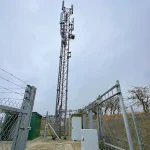Vodafone Clarifies Plans for Joint Network Roaming with Three UK

Mobile operator Vodafone (VodafoneThree) has revealed a little bit more information about how their new “Access to roam” feature will work. This will shortly become one of the first major benefits of their recently completed merger with Three UK (here and here) – allowing 27 million customers to roam across both networks at no extra cost.
The official announcement of all this stated that the new ability would be ready “within a few months” and will “happen automatically, with no need to change a thing (phones will connect to the best coverage available)“. By the end of 2025 this will remove a total of 16,500 sq/km of not spots (areas with no mobile signal) – equivalent to 10x the size of London – with the first 25 sites already live. But this didn’t provide the full and correct context.
The service will deliver all this by harnessing a network sharing architecture known as Multi-Operator Core Network (MOCN), which allows more than one network operator to share the same Radio Access Network (RAN) – including towers, antennas, and spectrum – while maintaining separate core networks (usually situated inside data centres or similar).
Advertisement
In other words, whether your phone has a Vodafone or a Three UK SIM, it will connect to either a Vodafone or a Three UK mast – whichever one provides the best signal in your location. Naturally this approach has prompted a few questions from the customers of both operators and so Vodafone has now released a useful Q&A, which helps to answer a lot of those queries.
Some of the highlights of this include confirmation that it will take a total of 8 years to fully complete the roll-out of ‘Access to roam’ (it’ll be 95% complete after 6 years), which wasn’t made clear on the original announcement. The deployment is thus initially being strategically focused on areas of the country that will gain the most benefit from it (i.e. those with a poor 4G or 5G signal from one or the other operator).
In addition, while both 4G and 5G (mobile broadband) Non-Standalone networks will benefit, users of the latest 5G Standalone (5G SA) services (i.e. a pure end-to-end 5G only network) will have to wait a bit longer as it’s not yet able to support those (this is vaguely expressed as being planned for the future, with no firm ETA).
However, it’s probably best to think of “Access to roam” as being an interim technology, since eventually Vodafone and Three UK will look to have a single core network that will do away with the need for MOCN. But delivering on this is still “many years away“, which is an interesting thing to say given that MOCN itself will already be taking up to 8 years to fully deploy.
Advertisement
Access to roam Q&A
Do I need to change any settings on my phone for MOCN to work?
No, you don’t need to change any settings on your device. MOCN/access to roam will work automatically. This is thanks to VodafoneThree’s dedicated MOCN servers. Running specialised software and dotted across the country, they identify Vodafone and Three UK SIMs, then automatically route their connections to the relevant core network no matter which radio network they’ve connected to.Think of these servers as helpful multilingual staffers in an airport or train station, directing travellers unfamiliar with the layout of the place to the right gate or platform so that they don’t miss their connection.
Who or what decides which signal/radio network is better?
The decision, on which network a Vodafone or Three customer’s phone will use, is made by the core network of the MOCN-enabled mast that it is connected to. VodafoneThree’s network design team have agreed an intricately weighted set of criteria for when a customer’s phone will move between networks.From the customer’s point of view, the process will be seamless. For example, there won’t be any change in the stated name of the network as it appears in your phone’s settings or at the top of its screen.
Will it cost me any extra to use MOCN/access to roam?
Access to roam is available at no extra charge to customers of VodafoneThree’s five brands.
Where will MOCN/access to roam be available?
As of June 2025, MOCN has been enabled at 24 masts across the UK. By March 2026, 10,000 more network sites will have MOCN.
When will access to roam be available?
The roll out of access to roam has already started in the areas of the country that will gain the most benefit from it. 95% of the rollout will be complete within six years, with the entire rollout finished in eight years.
So the MOCN rollout will be complete in 2033? Why does the rollout take eight years?
Some masts can be upgraded with MOCN remotely with what is effectively a software upgrade. Others, however, will need to have new hardware fitted to them. Completing such hardware upgrades, especially in remote areas of the country, will take time.
Will network-dependent phone features, such as RCS messaging and Visual Voicemail, still work when my smartphone is using access to roam/MOCN?
Yes, any network-dependent phone features that are normally available on your usual network will still be available when your phone is connected through access to roam/MOCN.
Will VodafoneThree’s 5G Standalone (5G SA) service be available through MOCN?
For now, MOCN will provide customers with 4G and 5G Non-Standalone services. 5G SA service through MOCN is planned for the future.
Will VodafoneThree eventually have only one core network, doing away with the need for MOCN?
There will eventually be one core network, but that is many years away.
Does the Shared Rural Network (SRN) use MOCN?
SRN masts that cover areas which were previously Partial Not Spots – which is where service was only available from just one mobile provider – do use MOCN.
What happens if I have a dual-SIM phone equipped with both Vodafone and Three UK SIMs?
MOCN doesn’t affect the behaviour of a phone equipped with dual SIMs. Such a phone would use whichever network for whichever purposes you specify in its settings.
Is ‘roam to access’ the same thing as international roaming?
No, they’re not the same thing.
I’m a foreign visitor to the UK and my non-UK mobile provider has an international roaming agreement with either Vodafone or Three. Will my phone be able to use access to roam/MOCN?
MOCN wouldn’t affect the behaviour of an international visitor’s phone. Such a phone would use whichever network the customer’s home network has a roaming agreement with.
Mark is a professional technology writer, IT consultant and computer engineer from Dorset (England), he also founded ISPreview in 1999 and enjoys analysing the latest telecoms and broadband developments. Find me on X (Twitter), Mastodon, Facebook, BlueSky, Threads.net and Linkedin.
« The H1 2025 Top Fastest UK Mobile and Home Broadband ISPs






















































8 years to deploy, more like 12. I’ll bet that wasn’t mentioned to the regulator when they were grovelling for permission to merge/takeover.
What other delights await us, oh yes higher prices, those will not be taking anywhere near as long to deploy.
There’s nearly always plenty of choice in the mobile world. If you don’t like what one network is doing, choose another. Granted, I know that’s sometimes not easy given coverage, prices etc. but, overall, most people have choice. I am with Vodafone, and I pay a decent amount for my service. But that’s my choice to do so, as it works in the places I need (though Three is gaining a stonking 5G signal in many of those places). I wouldd have preferred EE, but it’s a very bad signal at one of my houses – and I know this as my work phone is EE. Am I bothered that prices will go up? Yes, but they would go up anyway so why get worked up about it? And if this merger creates a stronger network (signal, resiliency, coverage, core network, more energy efficiency, and / or any other measure you care to choose), then that’s fine by me. Will some lose out? Possibly, but there’s nearly always more than one factor involved when that happens. I’ve lost out with EE due to the signal. But it works well for many others. Such is life.
The outlined timeline doesn’t seem right to me, either. What I remember from reading newspaper articles about the upcoming (then not yet vetted) merge, I believe they said they would have a single-core standalone 5G network rolled out nation wide by 2033.
Now they’re saying it will take until 2033 to deploy what is essentially national roaming? That’s not very reassuring.
Especially since we recently heard that Nokia plans commercial 6G services to kick off in 2030…
@BeeTee, Plenty of choice, where?
We are now down to 3 networks.
We now have 3 physical networks and two of them don’t invest on half of the country (O2/Vodafone control areas), making it a 2 network market for many.
So I truggle to see the “plenty of choice”. It’s either EE and Vodafone or EE and O2.
Hi Martyn, I live in a small holding just outside the village of Lochwinnoch in Renfrewshire Scotland.I was excluded from the R100 programme without my knowledge and could not be added back in as the contract had already been awarded. Fortunately, I was able to access the grant for a standalone installation utilising the mobile network which was 3 as this was the fastest line speed provider for my house.Recently my line speed has reduced by approximately two thirds and I believe Vodafone must have removed the existing signal provided by 3 for this to happen as the line speed now being achieved is in keeping with the initial speed test for Vodafone that I did a couple of years ago. Not only will the prices be increasing at the end of my contract but the performance is also reducing and I have no other options as suitable infrastructure is not in place that is any better with other providers. Any advice on where I can raise my complaint would be greatly appreciated. Kind Regards, Gregor
This makes sense. I’m on ID Mobile (three) and had noticed that it is not mentioned anywhere about what will happen for the networks that are not directly owned by either Vodafone or Three.
Same here. I have iD mobile and a Asda SIM card on Vodafone. The MVNO information is non existent which given three and Vodafone share quite a few.
It is not mentioned in the article but the benefits also apply to all MVNOs of Three amd Vodafone.
I saw someone using an ID Mobile SIM who were able to access MOCN
I am looking to switch from Lebara to ID Mobile. I likely will go through with it but really hope ID benefits from this. I spoke to people from ID Mobile and Vodafone and they just kept responding with this is all the information we can give at the moment, its unknown. (I prefer vodafone to three anyway but ID has a better deal)
I’m confused, is it not just a case of adding all 3 customer SIM card numbers to the Vodafone system and all Vodafone’s to 3 so what ever the mast it will connect
Yeah I assumed it would be similar to international roaming where you could roam onto another network that isn’t your own (so in this case Vodafone to Three, or Three to Vodafone). Maybe that’s too simplistic for some reason?
That’s sort of how T-Mobile and Orange did it back in the day (before they became EE), but it had 2 drawbacks
1) The customer had to have “international roaming” enabled
2) You’d only switch networks if you had absolutely no signal on your home network.
Then again, I don’t remember it taking them 6 years to merge the networks entirely!
No, because then you potentially have two profiles that our out of sync.
It’s always other people’s problems that seem so easy to solve, right?
8 years… we’ll have 6G before they complete this! Can anyone comment on how long it took Orange and T-Mobile to enable roaming and merge their network completely? The plus side is that O2 has the potential to improve their network by the time this work is completed. I assume to be as cheap as possible VF/Three won’t introduce new sites which by default would be a ‘converged’ site? I find it weird they’re keeping so many brands (including Vodafone and Three) and for apparently at least up to 8 years. How are they going to realise the 5G benefits they promised the regulator when they haven’t got a timeline?
* Initial Roaming (2G): Orange UK and T-Mobile UK enabled customers to roam between their 2G networks for improved signal from October 5, 2010. This was approximately 6 months after their official merger on April 1, 2010.
* Automatic Roaming (2G) and Further Integration: Automatic switching between the 2G networks, along with deeper integration, rolled out in early 2011.
* Full Network Integration (2G/3G/4G/5G): The complete merger and optimization of their combined network assets (including 3G, and later 4G and 5G infrastructure) was a much more extensive, multi-year process. While immediate benefits of combined coverage were available, the complete technical integration and decommissioning of redundant sites, along with the rollout of new, shared technologies, extended significantly beyond 2011. This deep integration continued throughout the 2010s and into the 2020s as EE built out its unified 4G and 5G networks.
The T-Mobile/Orange roaming was quick to implement and brought benefits to a large number of customers within a short period. In general, it worked well and caused few problems. VF are choosing the cheaper option probably because their core network wouldn’t be able to cope with the additional traffic at the moment.
All the focus on signal strength is unhelpful. What’s the point of having good signal strength if you can’t do anything with it because the backhaul for the cell site is a couple of yoghurt pots and a length of string? I get great signal strength where I live but connectivity is intermittent because the cell site doesn’t have capacity for the number of users. Three know about it and have said it will be addressed at an unspecified future date. They have been saying this for a number of years with no fix in sight. The Vodafone merger could be an answer but not if they’re prioritising based on signal and ignoring capacity.
What worries me is that they will remove some 3 masts, and we will be left with Vodarubbish.
I’m concerned about the opposite. 3 often has absolutely zero back haul capacity spare in busy cities because the network is oversold and run on a shoestring. It’s been terrible in Sheffield, Bristol, London, Manchester and Leeds in my experience which is why I left. Similar with EE (although EE was right when they launched for me) but zero issues with Vodafone. It is not as lightning fast everywhere but I do get a signal that actually works.
I suppose we have to wait and see, thankfully I don’t rely on my mobile like some people do.
It is a thing that is there, and I pay as little as I can to keep it running.
No mobile network provider going to make much money from me.
I think I’m right in saying that Three has never had 2G/Edge (it was built with 3G), whereas Vodafone does have 2G/Edge. I’m afraid to say Vodafone still gets a lot of Edge coverage – driving to the North from London along the M40 gives miles and miles of Edge, and in West London along the A4. So if they do shut off Three masts, it won’t be great.
Well, that doesn’t sound good.
They might need to physically upgrade masts in remote areas, in the next 8 years. Ironically that’s where network coverage is an issue.
Also do MNVOs get any benefit?
Never seem to get answer as to what this means for MVNO like Lebara? Will they get access to both Vodafone and 3 networks in time?
Over the last few months my signal has gone worse. And I have to pay for roaming everytime I go on holiday it not right.
8 years to add the benefits.
Bet I’m not wrong in suspecting that the downsides will appear sooner. Hundreds, possibly thousands of sites that would have been upgraded in the coming year or two now won’t if there happens to be existing good coverage from the other network. Just 8 years to wait instead.
Great.
so this is a win for voda cos there data sucks ,,, and also a win for three to extend the network with out putting more towers up which they have to share with EE and nobody wants that old network leaching off three any more !!! about time EE got its own 5g outside London !!!
It’s annoying how little information there has been on other MVNOs. Those mentioned are all sun brands, but what of the others that are separate business but use either 3 or voda? Silence!
This kinda reminds me of what happened with T-Mobile and Orange, back when they became EE. You had the choice of 234-30 (T-M) and 234-33 (Orange) and if the T-Mob signal ran out, it went to Orange, and vice versa.
Needless to say, this was fixed with the completed 4G rollout, since 4G only used the T-Mobile network code (234-30), 3G was either brought into the MBNL umbrella or made EE only, and 2G got upgraded to EDGE with EE (3UK didn’t have 2G) because prior to EE, T-Mobile and 3UK proritized getting every mast HSPA+ enabled under MBNL, which was more important than trying to upgrade a terrible technology (GPRS 55k) to something only slightly less terrible (EDGE 220k). Both GPRS and EDGE are stilly wholly inadequate for use in 2025.
Vodafone/Three have two sets of band 78
130 MHz and 100 MHz. Three is currently using 100 MHZ and speed is really good.
Don’t understand why Vodafone can’t able to use 130 MHZ instead of two separate 50 & 40 MHZ.
We’ll definitely start to see that happening – there’s already sites running with 100mhz + 100mhz using both network’s spectrum:
https://www.linkedin.com/posts/peter-clarke-95016b172_the-power-of-vodafonethree-200mhz-aggregated-activity-7342819492667813890-scSq?utm_source=share&utm_medium=member_desktop&rcm=ACoAAAxWK_ABWA9MYF7_NCransWld7UQzu6dfts
Just takes time to re-jig spectrum allocations as it’s going to be done in sequence with adjacent sites too.
MOCN with existing spectrum bands can be done, it would seem, without having any spectrum impacts
Cough cough 3’s 3G sites are a reason for 8 years upgrading
Why?
So much for the “within a few/six months” all customers will have access to both networks masts! I thought this was more of a Vodafone takeover of Three (in 3 years time) rather than a proper Merger by the sound of it. Surely the Vodafone brand isn’t going to disappear from the UK too?!
It is a JV, although Vodafone own 51% (for national security reasons I think as VF has many government contracts)
8 years?
No wonder why UK is always fallen behind!
By comparison, following completion of the merger agreement, T-Mobile completed the shutdown of the Sprint 5G network in less than three months, howver the T-Mobile approach would be unlikely to get past Ofcom.
Sprint’s network was also a basketcase (which was why Sprint sold up and the FCC permitted it to go ahead), so aside from those who still used CDMA only phones – for which they would have got free replacements anyway – the forced move to T-Mobile was likely a huge upgrade for most customers.
It took a lot longer to actually close down Sprint’s network in totality with a long transition period involving special “T-Mobile Network Experience” SIMs that preferred the T-M RAN but continued to use Sprint’s back end and billing system.
It’s not quite so clear cut in this case where it seems likely that the network rationalisations will have to be much more surgical, though arguably the future MOCN will be a lot more seamless.
I guess the real surprise is that they didn’t have MOCN ready to go for a “big bang” launch from day one. Vodafone Australia recently created a MOCN with Optus for rural areas and they had that fully operational within weeks of receiving regulatory approval, with VF users seeing a quantum leap in performance overnight
@Ivor:
I will point out to you that I was talking about the migration of users from Sprint 5G infrastructure. The migration involved modifications to 5G radio interfaces across most of the UK for all three former operator networks.
I will also point out that the migration was far more involved than you suggest. The migration of the other users, services and infrastructure, excluding the 5G switch-over, is not comparable to the Vodafone consolidation.
Is Vodafone still using 02 masts under Project Beacon? If so, what role do they play in the transition, i.e. will they be included in this “Access to roam” initiative? If Vodafone is still using the 02 masts, what is the plan for them?
Yes, my local mast which used to be O2 only had Vodafone added under project Beacon about 5 years ago, it’s never been changed or touched since that upgrade, they added 4G at the same time.
@Guy Cashmore: Thank you.
Free roaming will only last until they scam you for an upgrade on your contract and then remove roaming without telling you like they did to all their customers after Brexit.
There was no scam. This is not the same scenario, and you have been economical with the facts.
From the article:
===
“within a few months” and will “happen automatically, with no need to change a thing (phones will connect to the best coverage available)“. By the end of 2025 this will remove a total of 16,500 sq/km of not spots (areas with no mobile signal) – equivalent to 10x the size of London
===
Surely it’s a partial-not-spot if it has signal from Vodafone, or from Three? If it truly has no (usable) signal from either, or any other mobile network, then it’s an actual not-spot. I can’t see how this suddenly changes if, such as myself, being on Vodafone with a very weak signal, in an area with no Three coverage, I’m not suddenly going to get Three coverage that doesn’t exist (although Three customers will enjoy the weak-to-nothing Vodafone signal, making it even worse). As I found out at the weekend when I had a brief powercut, there is no Vodafone signal indoors, to the point my phone tried to get a connection to Emergency SOS Satellite as it couldn’t even find any mobile networks for even “emergency calls only”.
Vodafone website coverage checker has been showing a change (not sure it’s an increase or just a change) on the coverage map in their “3 month” plan view for many many months, yet nothing has improved yet. Currently have 1 bar of E (Edge), which won’t actually allow me to connect to the internet or even send text messages if I try, the signal simply drops when it realises it’s not there.
“Not spots” from the perspective of the respective customers of the two brands.
I wonder if a device that is compatible for VoLTE on voda but not 3 would not roam to 3 (or vice versa) to avoid having devices which connect for data but can’t make or receive calls)
Or even better, ensure both networks support the superset of devices available for VoLTE across both networks.
“Focusing on areas that will benefit the most.” So that me screwed again. On all the maps im well covered by all providers but only two work in the house and then slow (<8mb) and spotty. Its not some old stone cottage either but part of a 70s estate. One day I might get a usable signal (probably same time openreach realise our town exists)
So itll be many years for a single core network.. I wonder what gen will we be on by that time.
Already us Three Business customers are being offered 20% off Vodafone broadband. All whilst Three is currently down for calls.
Joke
Im in central England and calls are fine on Three. It must be a certain area thats affected.
Im guessing this means when mapping on cellmapper itll map both 3 & Voda networks, depending which mast/pole etc is in range.
I’m really excited about the new roaming features Vodafone is introducing with Three! It sounds like it will make traveling across the UK much easier. Can’t wait to see how it works in practice!